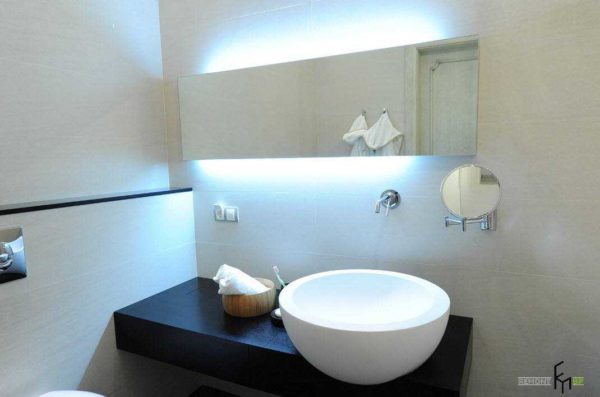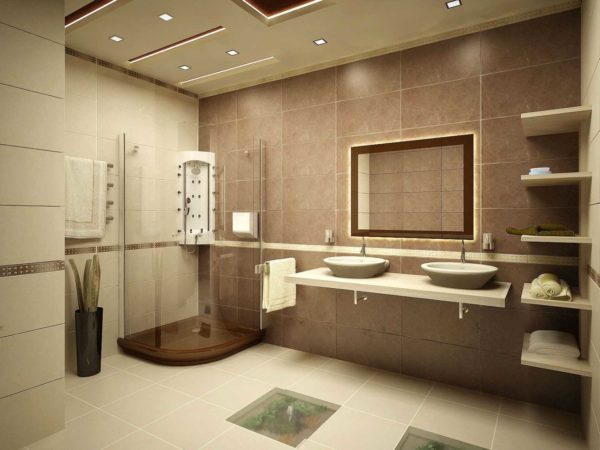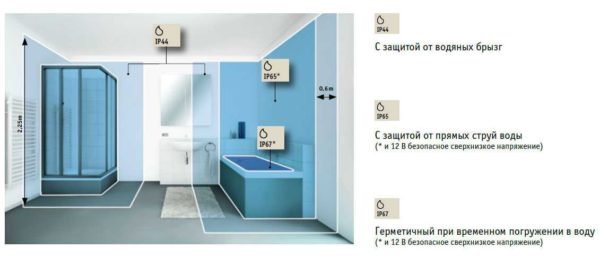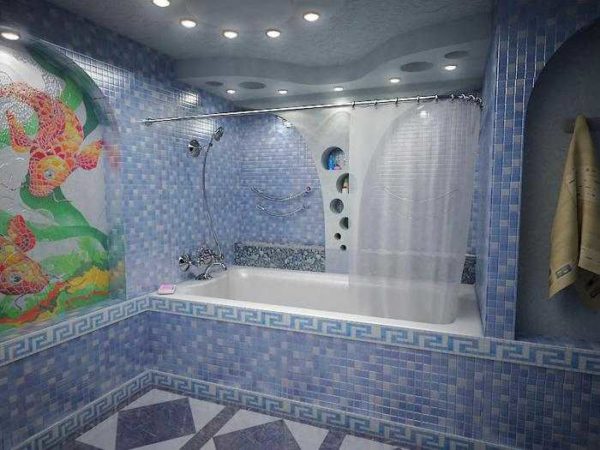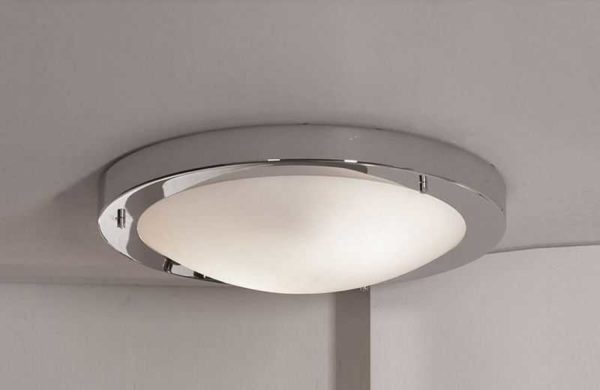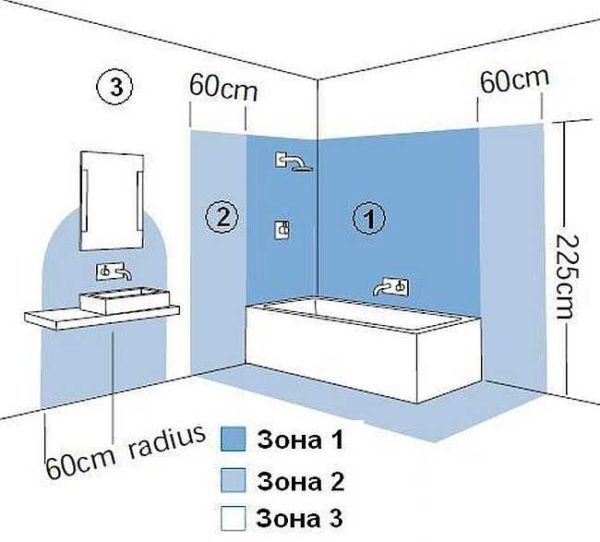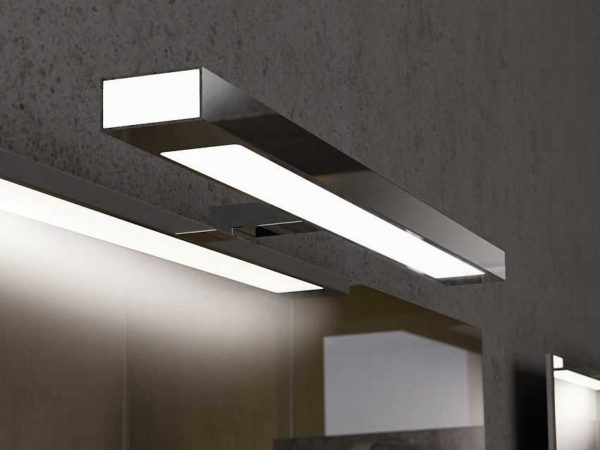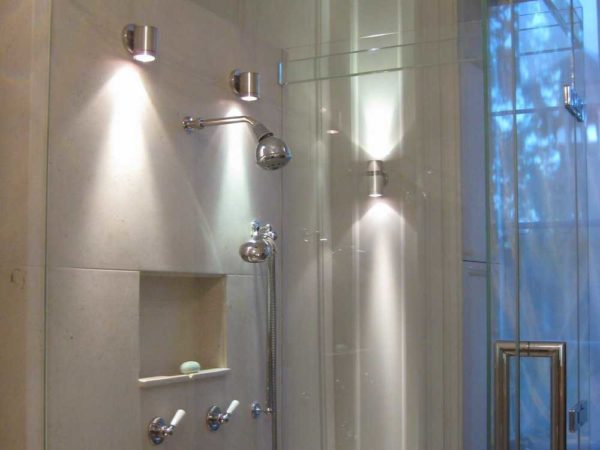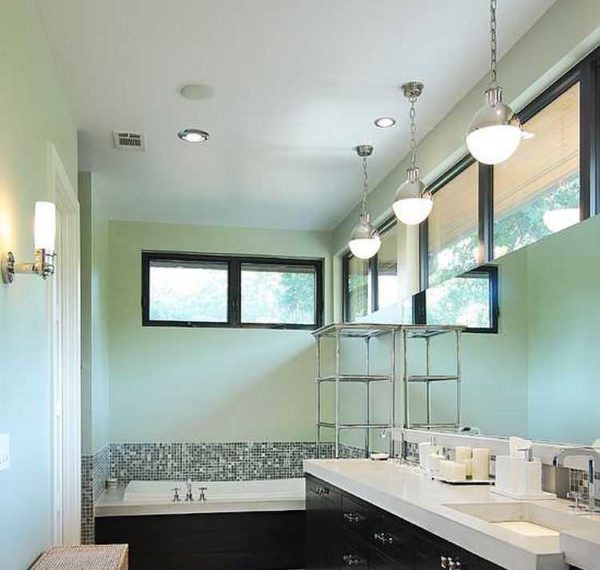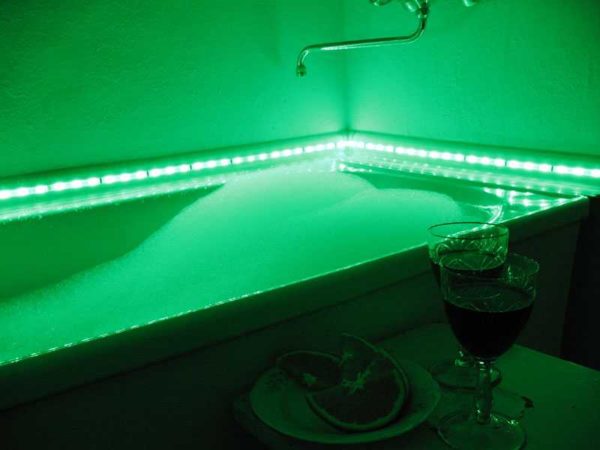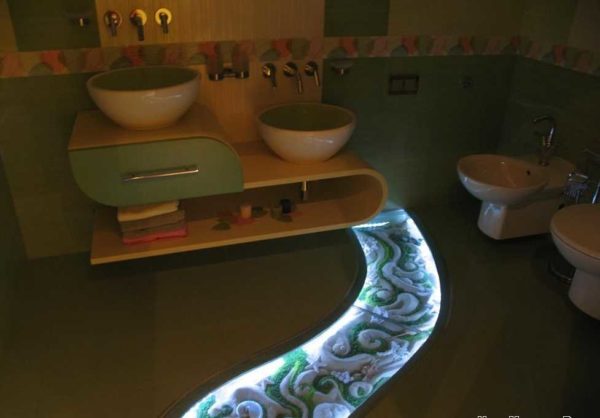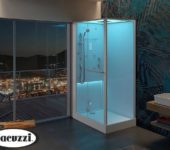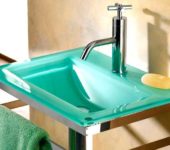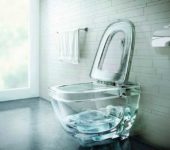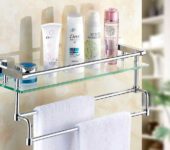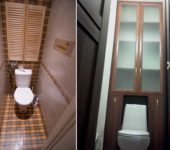How to choose bathroom fixtures
The bathroom should be safe, comfortable and beautiful. And one of the factors is lighting. Therefore, it is necessary to choose lamps for the bathroom consciously, taking into account not only the aesthetic component, but also safety. In addition, lighting fixtures must provide enough light in the right places.
The content of the article
How to ensure electrical safety in the bathroom
In the bathroom, special attention should be paid to safety: water and electricity are a very dangerous combination. There are two ways:
- use a regular 220 V power supply, but select devices with a high electrical safety class;
- reduce the voltage to 24 V or 12 V using appropriate low voltage luminaires.
There is actually a third way - to use wireless wall lamps for lighting with batteries. They are equipped with LEDs, so they consume little energy and will last a long time. But this option cannot provide full coverage.
Reducing the voltage is also not easy. In addition to the step-down transformer, it will be necessary to find suitable lamps for this area. They are, of course, there, but their design, to put it mildly, will not always be able to satisfy discerning tastes.
The most common approach is to choose bathroom fixtures with increased resistance to moisture - waterproof. But, in addition, to ensure safety, a separate power line is pulled into the bathroom, with its own RCD and a circuit breaker. This guarantees the ability to quickly de-energize the room if necessary and automatically turn off the power at the slightest problem.
Protection class of bathroom fixtures
A special system has been developed to classify the protection of devices. The safety class of the device (its case) is displayed with two numbers and the Latin letters IP in front of them. The first figure shows how much the device is protected from dust, foreign objects, it also displays touch safety, the second shows the degree of protection against water and splash water. The minimum protection is 0, the higher the numbers, the higher the protection. The exact data is shown in the table.
In the bathroom, electrical conditions vary by location. Near a bathtub, sink or shower, there is a high probability that water in one way or another gets on the device. Therefore, they try not to put lamps in the zones, and if it is necessary (or really wants to), then they use cases with a high degree of protection, not lower than IP67 (in the photo below). Such lighting fixtures are placed in the bath tub itself, for illumination or directly in the shower stall. As follows from the table, water does not enter such a case even when immersed to a depth of 1 meter. Bathroom fixtures of this class will cost a lot, therefore, if they are used, then in shower cabins.
Directly above the bathtub, to a height of 2.25 m, there is an area in which it is permissible to use enclosures with protection not lower than IP 65, protected from direct ingress of water. The same area is located in the immediate vicinity of the washbasin - 60 cm from the tap to the sides and up.
Bathroom luminaires are IP 65 class too. For this reason, lighting devices are rarely installed here. Only the waterproof LED strips will feel good.They, in principle, can even be immersed in water and such tapes are relatively inexpensive, but they must be powered by low-power sources, so for normal operation another power supply is required, which lowers the voltage to acceptable.
At the same height - 2.25 meters and a width of 0.6 meters around the bath and shower stall, it is quite possible that splashes can get in. Therefore, in this area, bathroom fixtures with a protection class of at least IP 44 are installed with protection against splashes.
Types of fixtures used in bathrooms
Bathroom lighting is mainly done in the traditional way, by installing lamps on the ceiling. They also use wall lamps or mirror lighting.
Ceiling
There are two types of ceiling lamps for bathroom installation - recessed and surface mounted. Built-in ones are used with suspended (plasterboard or plastic panels) or stretch ceilings. Their distinctive feature is that most of the body is located behind the plane of the final ceiling. Outside, there is a decorative strip and part of a light bulb.
The protection class is selected depending on the installation location. Outside areas with special requirements, enclosures with a splash protection class of at least 1 (vertical splash protection) can be installed, and dust protection is usually not standardized.
It is better to install LED bulbs built into spotlights for a bathroom. They consume little electricity and at the same time shine brightly, almost do not heat up and have a long working life.
The second option has a more traditional look, these are overhead ceiling lighting fixtures. They consist of a body that is fixed to the ceiling and a shade. Among such models, there are quite a few with a high class of protection, with such a structure it is easy to achieve tightness. For this, a rubber gasket is usually used.
The range of those and other lighting devices is great, moreover, they can be combined. With their help, you can create a unique design that fully meets safety requirements and gives a sufficient amount of light.
Wall mounted
Even with good ceiling lighting, there is rarely enough light around the mirror. Therefore, in the bathroom, lamps are still installed on the walls.
Depending on where you plan to install the luminaire, it can be of class IP 44 (zone 2) or IP 21, 31, 41, etc. The second number can be higher.
Therefore, it makes sense to put bathroom fixtures over the mirror or use a moisture-insulated (in a polymer tube) LED strip around the perimeter of the mirror. In this case, the light is distributed evenly, which is convenient for shaving and for cosmetic procedures.
Another option is to install wall-mounted spotlights, which have a movably fixed plafond. They allow you to direct the flow of light to the desired area. Decorators love them as they create interesting effects by highlighting a narrow section of the wall.
The combination of ceiling and wall lights for the bathroom will surely get the light intensity you want. In addition, it becomes possible to change the degree of illumination at will - turning on and off some of the lighting devices.
Chandeliers
Chandeliers in the bathroom are used very rarely. In small rooms, they look like an alien element, since most of them require a lot of space.
If you have an artistic flair, you can think of something with chandeliers to improve the interior of the bathroom.But it is better to choose from small laconic models, which, firstly, can give enough light, and secondly, they will meet safety requirements.
Additional features
A bath is not only a utilitarian room for hygiene procedures. In a warm bath you can relax, unwind, relieve stress. For such cases, you can make a backlight. To do this, again useLED strips, not only white ones, which are taken for lighting, but colored ones, to create a softer atmosphere conducive to relaxation.
There are LED strips that can change the colors of the glow. They give out less light and are not used for the main lighting, but for backlighting, that's the thing, because you can choose a color depending on your mood.
For those who want to create a uniquebathroom design, there is another interesting and so far little used opportunity - to make a backlight in the floor. It's a tricky job, but the effect is very interesting.
In general, choosing bathroom fixtures is a creative process. But don't forget about safety too.

